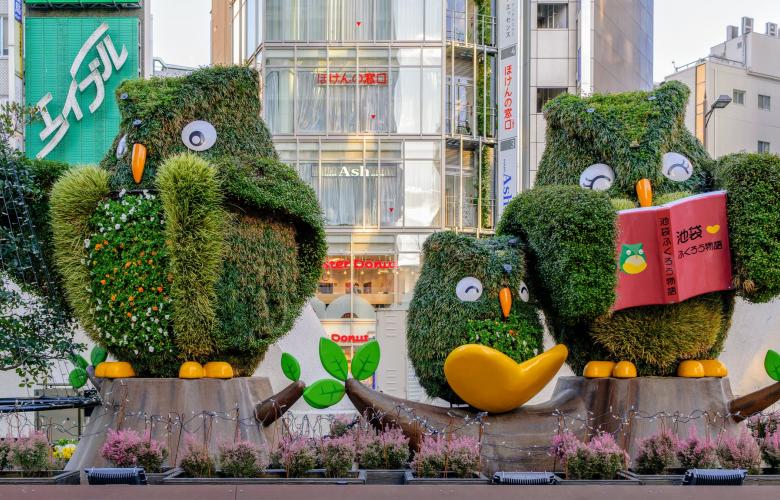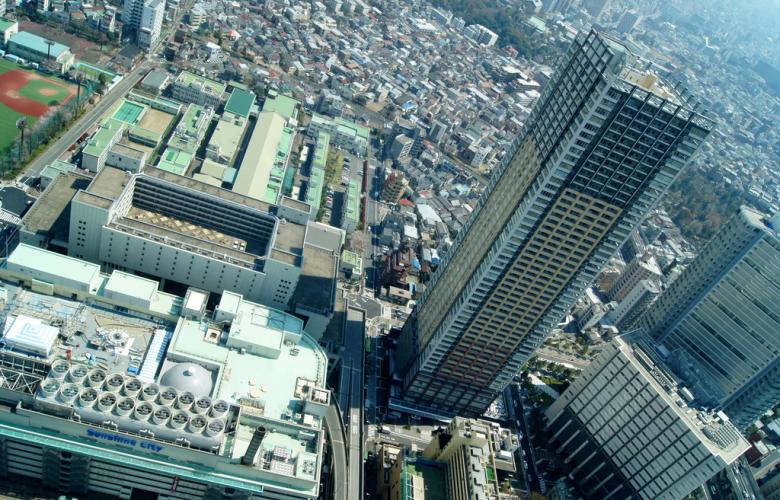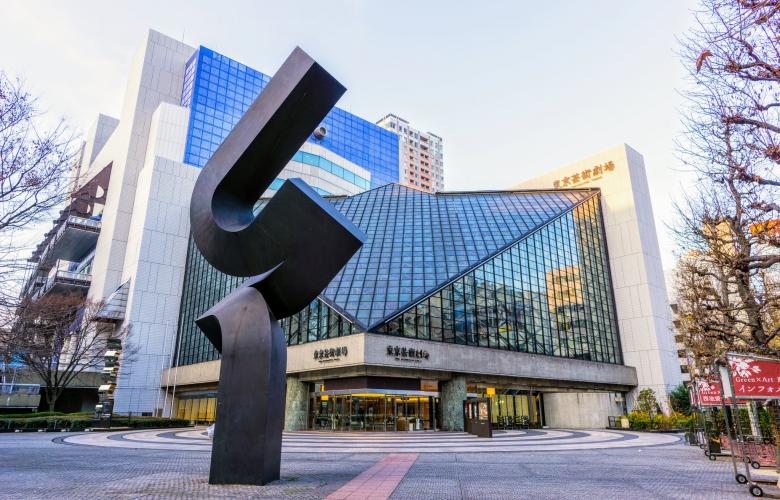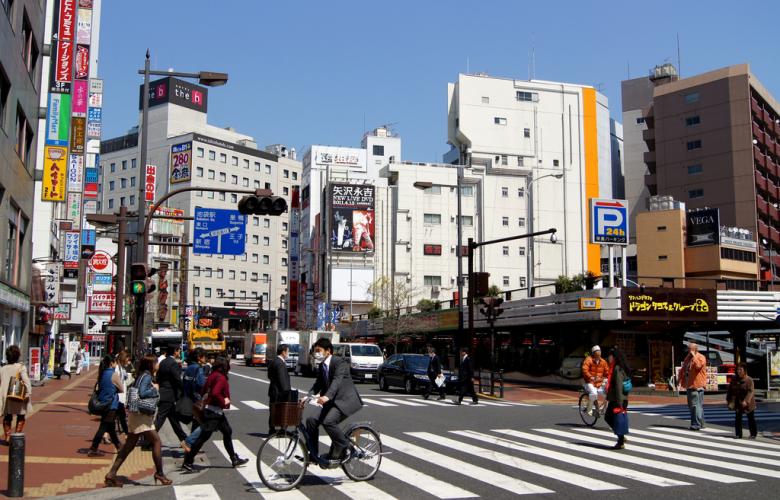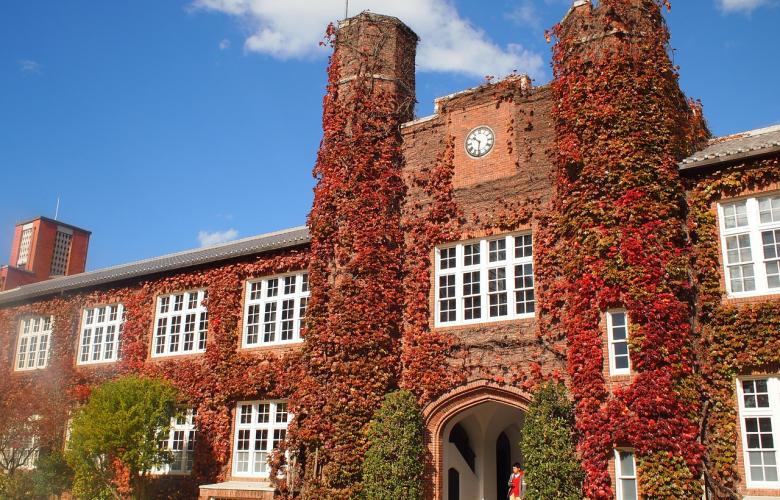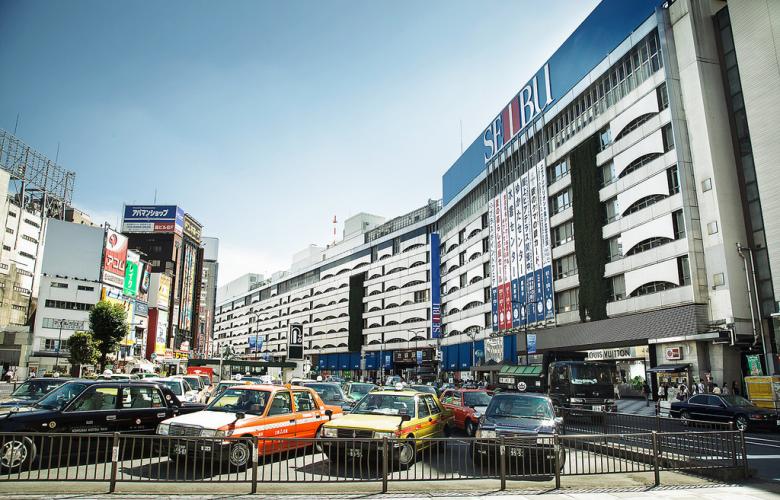It may not be a top destination in the tourist literature, but Ikebukuro is a key part of Tokyo in its own right. A centre of enterprise and education that is served by almost all of the major train lines, Ikebukuro is an urban hub surrounded by mellow residential suburbs. Here's a quick overview of what it's all about.
Though just five kilometres or so north of Shinjuku, the atmosphere in Ikebukuro is completely different. It's just as busy, that's for sure — but somehow seems a little more down to earth. Business people sit elbow to elbow with university students in the myriad eateries that dot the streets, and grannies browse the department stores while tiny tots scuttle home from school.
Ikebukuro is home to a number of banks and businesses, as well as one of Tokyo's top universities, Rikkyo (St Paul's). It's also a transit point for many people who live in the wards of Itabashi and Nerima, as well as some parts of Saitama Prefecture, but work in Tokyo proper.
Ikebukuro Station
This station is thought to be the second busiest in the world (Shinjuku taking the top spot), with close to 2.7 million (estimated) passengers passing through its ticket gates every single day.
A total of eight train lines connect Ikebukuro Station to central and outlying areas: the JR Yamanote, Saikyo and Shonan-Shinjuku lines (with the latter shared by the Narita Express), Seibu Ikebukuro Line, Tobu-Tojo Line, and three Tokyo Metro lines — the Yurakucho, Marunouchi and Fukutoshin.
With such a wide variety of trains and passengers traversing Ikebukuro Station daily, it's no surprise that the buildings and immediate surrounds are well supplied with shops, restaurants, chemists, cram-schools and entertainment facilities.
You can spend an entire day exploring the subterranean passages and the expansive buildings they open into. Other than the odd excursion to economical supermarkets (perhaps the one thing that's not abundant around the station), it's unlikely you'll have to go much further to meet your daily needs.
In September and October every year, the station area becomes even livelier as locals celebrate the Fukuro Festival — a colourful event that features parades, dance, drumming and all manner of other music. The name is a nod to the neighborhood's long-standing linguistic association with owls (fukuro in Japanese); while the live birds aren't frequent visitors, Ikebukuro houses numerous sculptures, statues and other owl-related art.
Find out what there is to see in Ikebukuro with this DIY walking guide
Department stores
The west and east exits of Ikebukuro Station are marked by the Tobu and Seibu department stores respectively; these are massive buildings that sell everything from fresh seafood to unusual Kit Kats and fancy kimono.
Their offerings run from deep basement levels all the way to rooftop gardens (which become open-air beer halls in the warmer months). If the names seem familiar, that's because they're the same companies that own the Tobu and Seibu railways.
Nearby, you can also find the Marui (0101), Parco, Lumine and Tokyu Hands stores, as well as electronics giants like Bic Camera and Yamada Denki.
Sunshine City
Towering over the east side of Ikebukuro is a 60-storey mall-like complex called Sunshine City. A maze of shops, cafes and restaurants, with an indoor theme park, Pokemon Center, observation deck and VR "sky circus," this place is a magnet for tourists — especially the younger ones.
The road leading from the station to Sunshine City is closed to cars and full of fashion retailers, 100-yen (or similar) shops, game arcades and themed cafes. This is easily the busiest stretch of Ikebukuro any time of the day. Nearby is Otome Road, an area that rivals Akihabara in its popularity among fans of anime and manga.
Cafes and restaurants
Ikebukuro is a foodie's paradise; it's possible to sample any style of cooking under the sun, and then some. The station, Sunshine City and department stores have a huge range of coffee shops and restaurants, but you can also find meals in the form of soup curry, one-coin pizzas, fine French dining, Turkish kebabs and slurp-worthy bowls of ramen (one of the area's specialties).
Eating out in Ikebukuro is highly affordable if you take your main meal at lunchtime (when specials abound) and patronise any of the numerous budget Japanese bars and pubs around the station.
The best way to savour the area is to slowly eat your way through the streets (underground and over, starting at no specific spot and going in no particular direction).
Art and parks
Ikebukuro isn't all concrete and commerce, and it's possible to grab some green time at the recently revamped Minami Ikebukuro Park on the south side of the station. Numerous smaller parks are scattered around Ikebukuro, but they largely lack vegetation and are nothing to write home about.
Art, however, can be found in abundance — from the owl-themed works in and around town to tiny galleries and the Tokyo Metropolitan Theatre, a hub of music and stage performances (with a fifth-floor gallery) that's a stone's throw from the west exit of the station.
The square outside the theatre is almost always buzzing with some sort of music, art or culture event of its own.
Shrines and temples
While Ikebukuro does not have a large number of Shinto shrines and Buddhist temples to visit, a few start popping up as you head away from the station.
One that stands out is Kishimojindo Temple, a gem hidden about 15 minutes to the east in the quiet residential area of Zoshigaya. This temple is over 350 years old; a sacred space dedicated to the goddess of safe birth and child-rearing, Kishimojin.
Here, you can spend a peaceful few minutes in the company of tall zelkova trees and a gingko that's been around for more than 700 years.
Nearby is the sizeable Zoshigaya Cemetery, resting place of the author Natsume Soseki.
By Carey Finn
Similar to this:
Tokyo's hip and up-and-coming neighbourhoods: Shimokitazawa
Yokohama Apartment: A unique city residency space in Japan
The 9 best places to Airbnb in Tokyo

